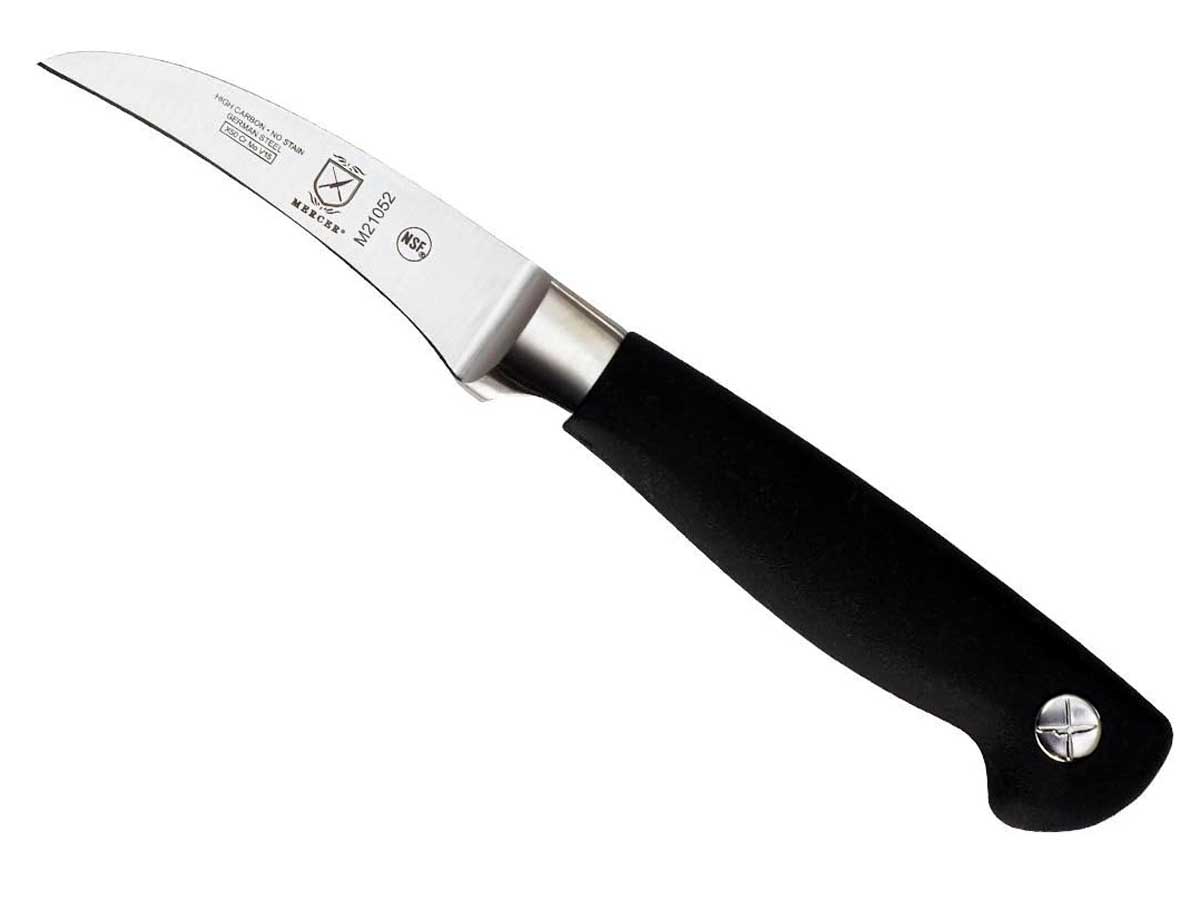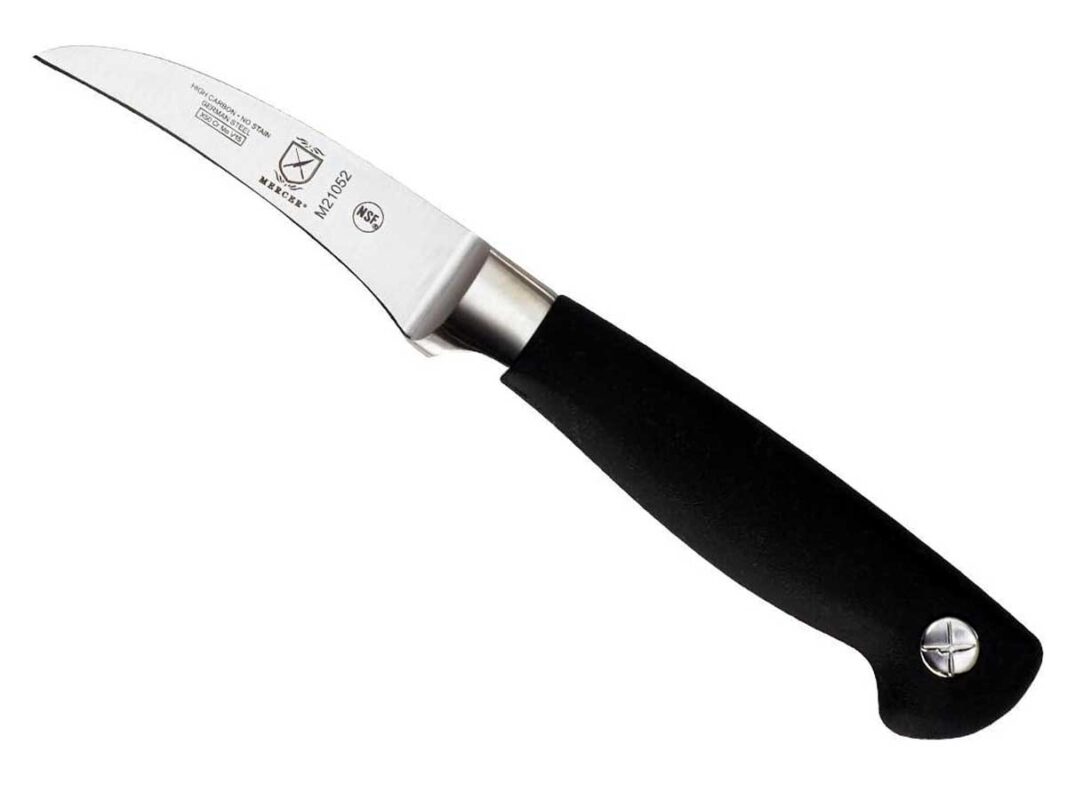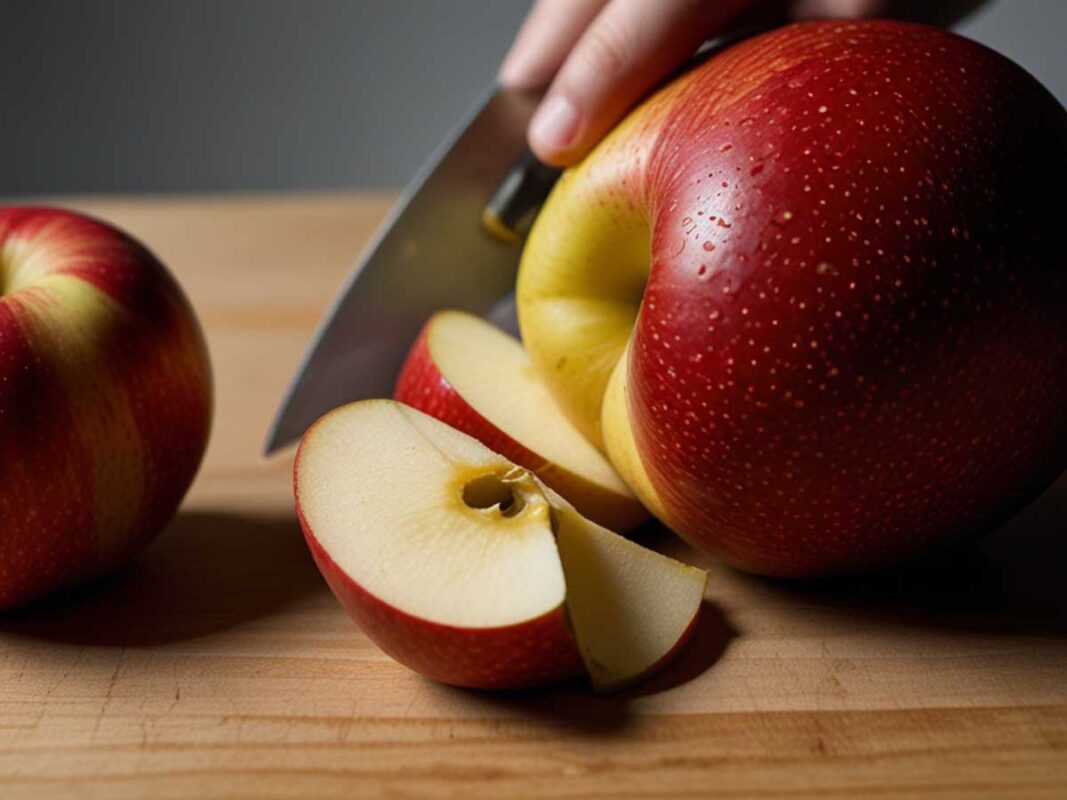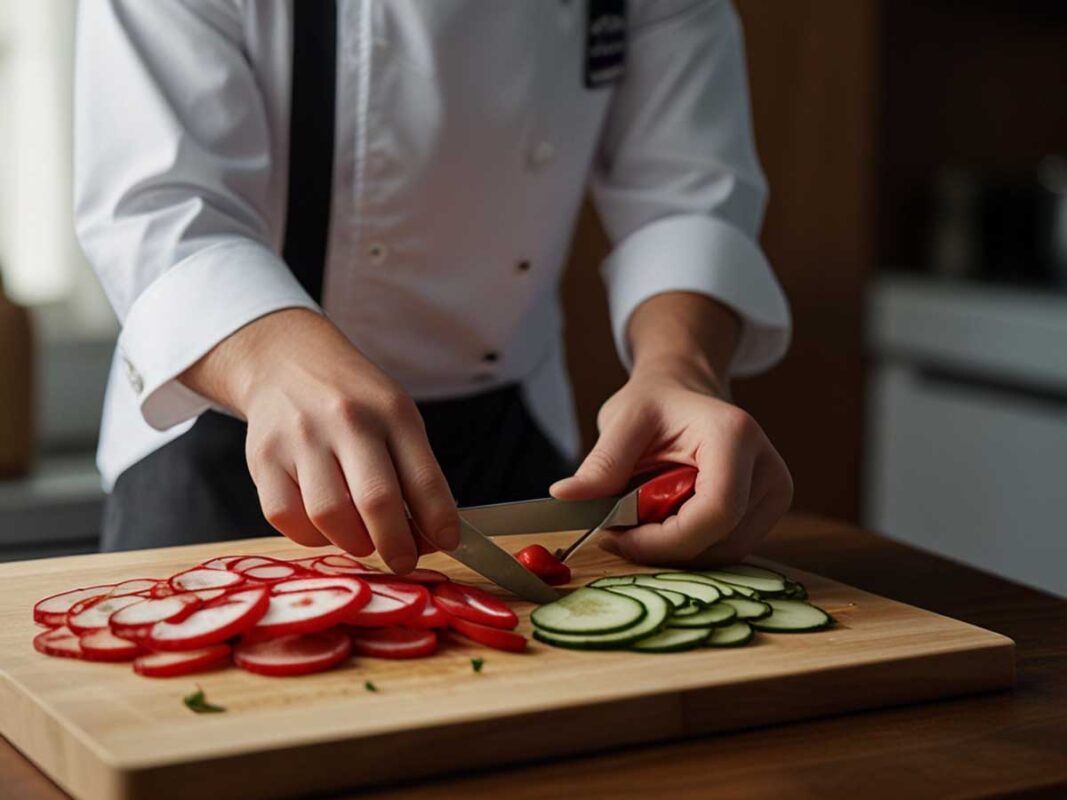What is a Tourne Knife Used For? Essential Uses and Benefits

The tourne knife, often called the “bird’s beak knife,” is a unique kitchen tool known for its distinctive curved blade. This design is specifically crafted for tasks requiring precision and control, making it a favorite among professional chefs.
The primary use of the tourne knife is to turn vegetables into neat, uniform shapes, which is especially important in fine dining where presentation matters. Besides vegetable carving, it’s also excellent for peeling and trimming. I’m very happy to share more about this versatile and essential tool for both kitchen and outdoor enthusiasts.
What is a Tourne Knife?
The tourne knife design is quite distinct, featuring a short, curved blade that resembles a bird’s beak. This curved blade allows for precision and control, especially when working with round fruits and vegetables. The blade usually measures around 2 to 3 inches, making it ideal for detailed work.

An important aspect of the tourne knife is its ergonomic handle. This handle provides a comfortable grip, which is essential for performing intricate tasks without causing hand fatigue. The combination of the curved blade and ergonomic handle makes it easy to execute precise cuts, ensuring that each slice is controlled and uniform.
Primary Uses of a Tourne Knife
The tourne knife uses are diverse, making it a valuable tool in both professional kitchens and for outdoor enthusiasts. Here are its primary functions:
- Peeling Vegetables: The curved blade is perfect for peeling round vegetables and fruits, such as potatoes, apples, and carrots. Its shape allows you to follow the natural contour of the produce, minimizing waste.
- Shaping Vegetables: One of the main tasks for a tourne knife is shaping vegetables. The knife can create attractive, uniform pieces that are not only aesthetically pleasing but also ensure even cooking. This is particularly useful for dishes that require precise presentation.
- Creating Garnishes: The tourne knife excels in making detailed garnishes. From elegant vegetable roses to intricate fruit designs, this knife makes it easier to elevate the look of your dishes.
- Tourne Cut: A specialized technique in French cuisine is the tourne cut. This involves turning vegetables into seven-sided, barrel-like shapes. The tourne knife’s curved blade makes this intricate cut possible, resulting in beautifully shaped vegetables that cook evenly and look professional.
These tourne knife uses highlight its versatility and importance in achieving both functional and decorative tasks in the kitchen.
Benefits of Using a Tourne Knife
Using a tourne knife offers several advantages in the kitchen. Here are the main benefits of a tourne knife:
- Precision Cutting: The curved blade provides excellent control, making it easier to perform intricate cuts with high accuracy.
- Time-Saving: Its design allows for faster peeling and shaping of vegetables, saving time during food prep.
- Enhancing Presentation: The knife helps create uniform, attractive cuts that enhance the presentation of dishes, important in both home and professional kitchens.
- Culinary Creativity: The tourne knife enables chefs to create intricate and decorative garnishes, adding a creative touch to their dishes.
Peeling Rounded Fruits and Vegetables
The tourne knife excels at peeling fruits and peeling vegetables, particularly those with a round shape like tomatoes and apples. The curved blade follows the natural contours of these items, allowing for smooth, even peels.

This design makes it easy to maintain consistent pressure while peeling, reducing the risk of cutting too deeply or too shallowly. As a result, you achieve a clean, uniform peel every time, which is essential for both appearance and texture in dishes.
Making Garnishes and Decorative Cuts
Creating beautiful garnishes and decorative cuts is another area where the tourne knife shines. In professional kitchens, chefs use this knife to carve intricate designs, enhancing the visual appeal of their dishes.

One common task is carving citrus twists for cocktails, which adds a touch of elegance and flair. The tourne knife’s precise blade allows for detailed work, making it ideal for crafting various decorative elements that can transform a simple dish into a stunning presentation.
Comparing Tourne Knife with Other Knives
When comparing the tourne knife vs paring knife, several differences stand out. While both are used for small, detailed tasks, the tourne knife has a curved blade that excels at working with round vegetables and fruits.
In contrast, the paring knife has a straight blade, making it better suited for tasks like slicing and mincing small items. Here’s a quick kitchen knives comparison to highlight where the tourne knife excels:
Tourne Knife Uses:
- Peeling and shaping round fruits and vegetables
- Creating decorative cuts and garnishes
Paring Knife Uses:
- Slicing small items
- Mincing herbs and garlic
By understanding the unique knife uses of each type, you can choose the right tool for each task, improving efficiency and precision in your kitchen.
How to Use a Tourne Knife
Knowing how to use a tourne knife properly can make a big difference in your kitchen tasks. Here’s a step-by-step guide to help you get the most out of this versatile tool:
1. Grip the Knife Firmly: Hold the tourne knife with a comfortable, secure grip. Your thumb and forefinger should pinch the blade just above the handle, while the remaining fingers wrap around the handle.
2. Apply Consistent Pressure: When peeling or cutting, use even pressure to ensure smooth and precise cuts. Avoid pressing too hard, as this can lead to uneven slices or damage to the food.
3. Practice the Tourne Cut Technique:
- Start with a Round Vegetable: Potatoes or carrots are ideal for practicing the tourne cut.
- Cut into Segments: Hold the vegetable in one hand and the knife in the other. Cut the vegetable into segments, turning it as you slice to create a seven-sided shape.
- Smooth the Edges: Make additional cuts to smooth out any rough edges, ensuring a uniform, barrel-like shape.
4. Peeling: For peeling tasks, hold the fruit or vegetable securely and use the knife to remove the skin in a single, smooth motion. The curved blade will help you follow the natural contours, reducing waste and creating even peels.
These knife handling tips will help you master the tourne knife, making your kitchen prep more efficient and precise.
Tips for Maintaining and Sharpening a Tourne Knife
Keeping your tourne knife in top condition requires regular maintenance. Here are some essential knife care tips:
- Regular Honing: Use a honing steel to align the blade’s edge. Hold the honing steel vertically and run the blade along it at a 20-degree angle. This should be done before or after each use to keep the edge sharp.
- Sharpening the Blade: For more thorough sharpening, use a sharpening stone. Wet the stone, then hold the knife at a 20-degree angle and draw it across the stone in a smooth, consistent motion. Repeat on both sides until the blade is sharp.
- Proper Storage: Store your tourne knife in a knife block, magnetic strip, or protective sheath to prevent damage. Avoid tossing it in a drawer where it can get nicked or dulled.
- Cleaning: Always hand wash your knife with mild soap and water. Dry it immediately to prevent rust and keep the handle in good condition.
By following these maintaining tourne knife and sharpening tourne knife tips, you can ensure that your knife remains a reliable and effective tool in your kitchen.
Know more: What Is a Bread Knife Used For
Frequently Asked Questions (FAQs):
Bottom Lines
The tourne knife importance in both professional and home kitchens cannot be overstated. Its unique design enhances kitchen precision, making it a valuable culinary tool for tasks requiring detailed work.
From peeling and shaping vegetables to creating intricate garnishes, the tourne knife excels. It not only improves the efficiency of food preparation but also elevates the presentation of dishes.
By incorporating this tool into your kitchen, you’ll achieve more consistent and visually appealing results. Whether you’re a chef or a home cook, a tourne knife is a worthy addition to your knife collection.
